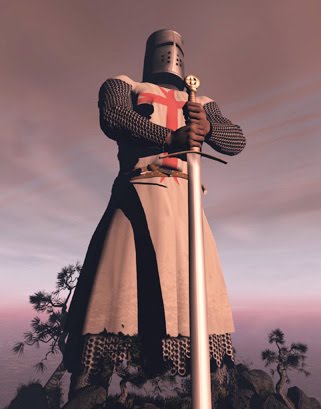
Is the Catholic Mass a Jumble of Medieval Superstitions or true remembrance of Jesus Christ's Sacrifice on Calvary? Many non-Catholics and sadly many fallen away Catholics do not understand the Mass. If we look at the Last Supper the night our Lord was betrayed, Jesus instituted the Eucharistic. The Sacrifice of his Body and Blood, soul and divinity.
"And he took bread, and when he had given thanks he broke it and gave it to them, saying, ‘This is my body which is given for you. Do this in remembrance of me’" (Luke 22:19).
Gospel passages in Greek (Matt. 26:26; Mark 14:22) reads: Touto estin to soma mou and in Paul’s version Touto mou estin to soma (1 Cor. 11:24). These both translate as "This is my body."
He did this in order to perpetuate the sacrifice of the cross throughout the centuries until he should come again, and so to entrust to his beloved spouse, the Church, a memorial of his death and resurrection: a sacrament of love, a sign of unity, a bond of charity, a paschal banquet in which Christ is consumed." (Sacrosanctum Concilium 47).
Here is where the problem occurs, many non Catholics insist that Christ says, "This is my body," he is speaking figuratively. However, if we look at Paul's discussion in Corinthians 11:23-29 and John 6, the chapter where the Eucharist is promised. The Greek if translated into English for 'body" in John 6:54 is "SARX", which means physical flesh, and the word for "eats" (trogon) translates as "gnawing" or "chewing." There are many non-Catholics who also believe that the word "is" is used because Aramaic, the language Christ spoke, had no word for "represents." However, this claim does not hold much solid ground as it a century ago, Aramaic had about three dozen words that can mean "represents."
The Catholic Church does not teach that the Mass is a re-crucifixion of Christ, and Christ does not suffer and die again in the Mass. Yet, it is more than just a memorial service. Jesus Christ really shed his blood once on the cross. In a Catholic Mass no real shedding of blood, no real death occurs. But, the consecration of the bread and wine are symbolic of body and blood of Christ, thus symbolizes his death upon the cross.
The Catholic Church specifically says Christ does not die again—his death is once for all. It would be something else if the Church were to claim he does die again, but it doesn’t make that claim. Through the Catholic Mass, Jesus continues to offer himself to his Father as a living sacrifice, and he does so in what the Church specifically states is "an unbloody manner"—one that does not involve a new crucifixion. Catholic.com.
If you look in the Old Testament the prediction of Christ being the true sacrifice to GOD using the elements of bread and wine. In Genesis 14:18, Melchizedek, the king of Salem (that is, Jerusalem) and a priest, offered sacrifice under the form of bread and wine. Psalm 110 predicted Christ would be a priest "after the order of Melchizedek," that is, offering a sacrifice in bread and wine. We must look for some sacrifice other than Calvary, since it was not under the form of bread and wine. The Mass meets that need.
"Furthermore, "according to the order of Mel-chizedek" means "in the manner of Melchizedek." ("Order" does not refer to a religious order, as there was no such thing in Old Testament days.) The only "manner" shown by Melchizedek was the use of bread and wine. A priest sacrifices the items offered—that is the main task of all priests, in all cultures, at all times—so the bread and wine must have been what Melchizedek sacrificed" Catholic.com
"Do this in remembrance of me" can also be translated as "Offer this as my memorial sacrifice." The Greek term for "remembrance" is anamnesis, and every time it occurs in the Protestant Bible (whether in the New Testament or the Greek Old Testament), it occurs in a sacrificial context. For example, it appears in the Greek translation of Numbers 10:10: "On the day of your gladness also, and at your appointed feasts, and at the beginnings of your months, you shall blow the trumpets over your burnt offerings and over the sacrifices of your peace offerings; they shall serve you for remembrance [anamnesis] before your God: I am the Lord your God." Thus the Eucharist is a remembrance, a memorial offering we present to God to plead the merits of Christ on the cross" Catholic.com
Hope this helps and shed's light to the true meaning of Catholic Mass and clears up any misconception that most non-Catholics assume that a Catholic Mass is a Jumble of Medieval Superstitions. The Mass is the renewal and perpetuation of the sacrifice of the cross in the sense that it offers [Jesus] anew to God . . . and thus commemorates the sacrifice of the cross, reenacts it symbolically and mystically, and applies the fruits of Christ’s death upon the cross to individual human souls. All the efficacy of the Mass is derived, therefore, from the sacrifice of Calvary" (306).
Reference material: http://www.catholic.com/library/Institution_of_the_Mass.asp
NIHIL OBSTAT: I have concluded that the materials presented in this work are free of doctrinal or moral errors. Bernadeane Carr, STL, Censor Librorum, August 10, 2004
IMPRIMATUR: In accord with 1983 CIC 827permission to publish this work is hereby granted. +Robert H. Brom, Bishop of San Diego, August 10, 2004
